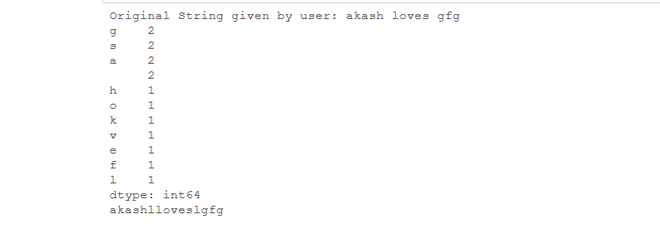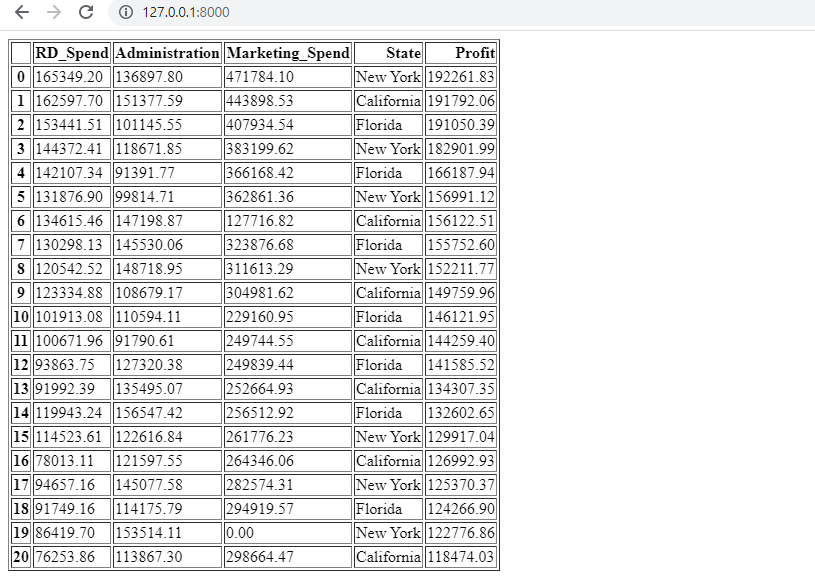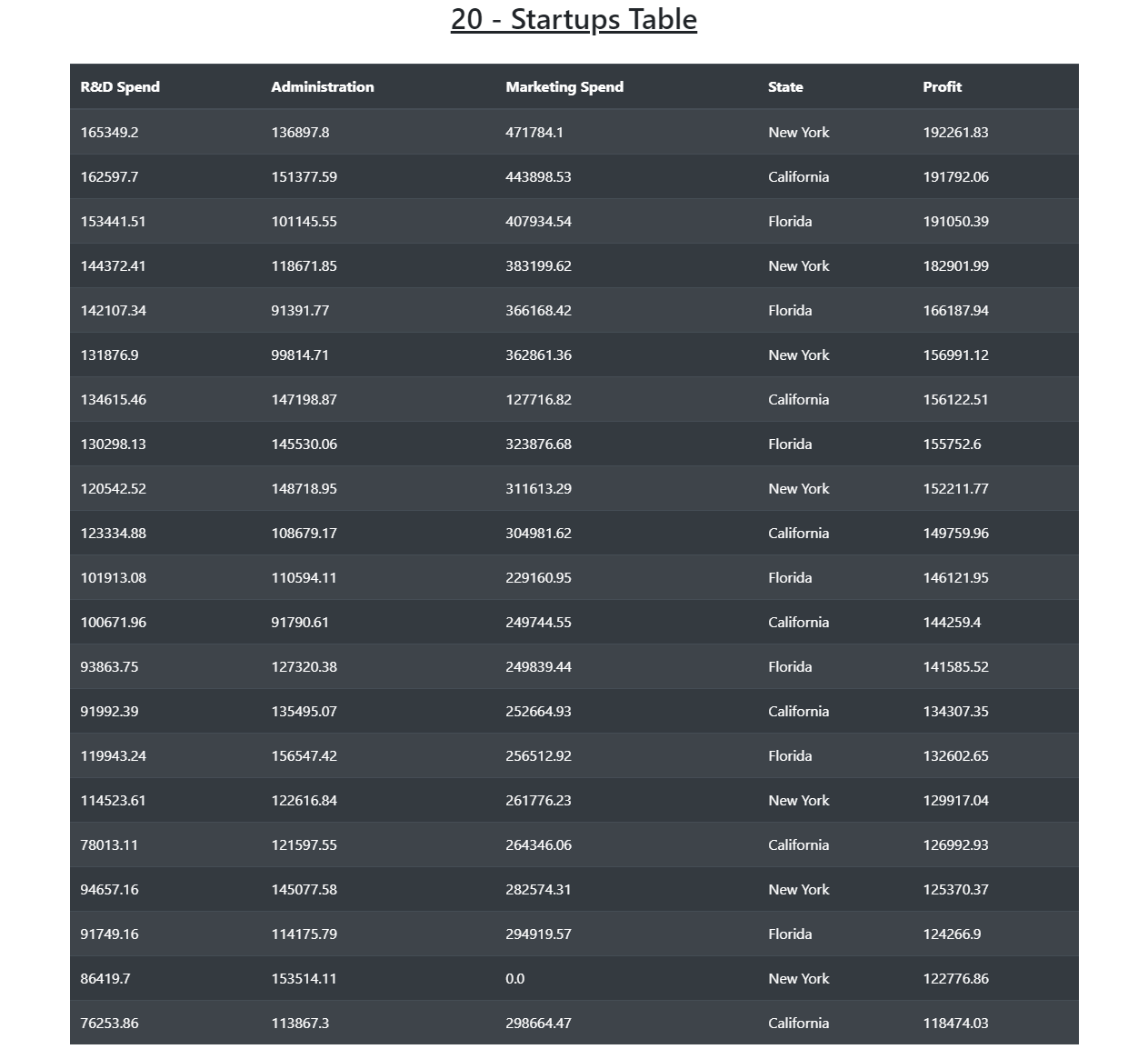使用Django框架在表格视图中把数据框架渲染成html模板
在Django中,通过设置相应的HTML页面的URL来渲染HTML模板是很容易的。在这里,我们将了解如何使用DataFrame来修改HTML模板或网页中的表格视图,为此,我们必须使用 “render “和 “HttpResponse “函数来处理DataFrame中的数据。
Sample DataFrame:

将数据框架渲染成html模板的方法 –
- 使用pandas.DataFrame.to_html()。通过使用这个内置的函数’to_html()’将DataFrame转换成HTML模板。使用这个方法后,整个DataFrame被转换为’table’html元素,而每一列的名称被转换为表头的’thead’标签。而DataFrame的每一行都被转换为HTML模板页面中表行元素的’tr’标签。
views.py
from django.shortcuts import HttpResponse
import pandas as pd
def Table(request):
df = pd.read_csv("tableview/static/csv/20_Startups.csv")
#'tableview/static/csv/20_Startups.csv' is the django
# directory where csv file exist.
# Manipulate DataFrame using to_html() function
geeks_object = df.to_html()
return HttpResponse(geeks_object)
urls.py
"""
The `urlpatterns` list routes URLs to views. For more information please see:
https://docs.djangoproject.com/en/3.0/topics/http/urls/Examples:
Function views
1. Add an import: from my_app import views
2. Add a URL to urlpatterns: path('', views.home, name ='home')
Class-based views
1. Add an import: from other_app.views import Home
2. Add a URL to urlpatterns: path('', Home.as_view(), name ='home')
Including another URLconf
1. Import the include() function: from django.urls import include, path
2. Add a URL to urlpatterns: path('blog/', include('blog.urls'))
"""
from django.contrib import admin
from django.urls import path
from tableview import views
urlpatterns = [
path('admin/', admin.site.urls),
path('', views.Table, name ="table"),
]
输出:

- 将DataFrame解析为Json对象并渲染到bootstrap模板中。这里我们使用适当的bootstrap模板,并使用render()函数得到一个表格视图。
views.py
# Write Python3 code here
from django.shortcuts import render
import pandas as pd
import json
# Create your views here.
def Table(request):
df = pd.read_csv("tableview/static/csv/20_Startups.csv")
# parsing the DataFrame in json format.
json_records = df.reset_index().to_json(orient ='records')
data = []
data = json.loads(json_records)
context = {'d': data}
return render(request, 'table.html', context)
table.html(’Bootstrap HTML模板’)
<!-- Write HTML code here -->
<!DOCTYPE html>
<html lang="en">
<head>
<title>TableView - Startup</title>
<meta charset="utf-8">
<meta name="viewport" content="width=device-width, initial-scale=1">
<link rel="stylesheet" href="https://maxcdn.bootstrapcdn.com/bootstrap/4.5.0/css/bootstrap.min.css">
<script src="https://ajax.googleapis.com/ajax/libs/jquery/3.5.1/jquery.min.js"></script>
<script src="https://cdnjs.cloudflare.com/ajax/libs/popper.js/1.16.0/umd/popper.min.js"></script>
<script src="https://maxcdn.bootstrapcdn.com/bootstrap/4.5.0/js/bootstrap.min.js"></script>
</head>
<body>
<div class="container">
<h2 class="text-center"><u>20 - Startups Table</u></h2><br>
<table class="table table-dark table-striped">
<thead>
<tr>
<th>R&D Spend</th>
<th>Administration</th>
<th>Marketing Spend</th>
<th>State</th>
<th>Profit</th>
</tr>
</thead>
<tbody>
<!-- jinja2 Technique -->
{% if d %}
{% for i in d %}
<tr>
<td>{{i.RD_Spend}}</td>
<td>{{i.Administration}}</td>
<td>{{i.Marketing_Spend}}</td>
<td>{{i.State}}</td>
<td>{{i.Profit}}</td>
</tr>
{% endfor %}
{% endif %}
</tbody>
</table>
</div>
</body>
</html>
输出:

 极客教程
极客教程